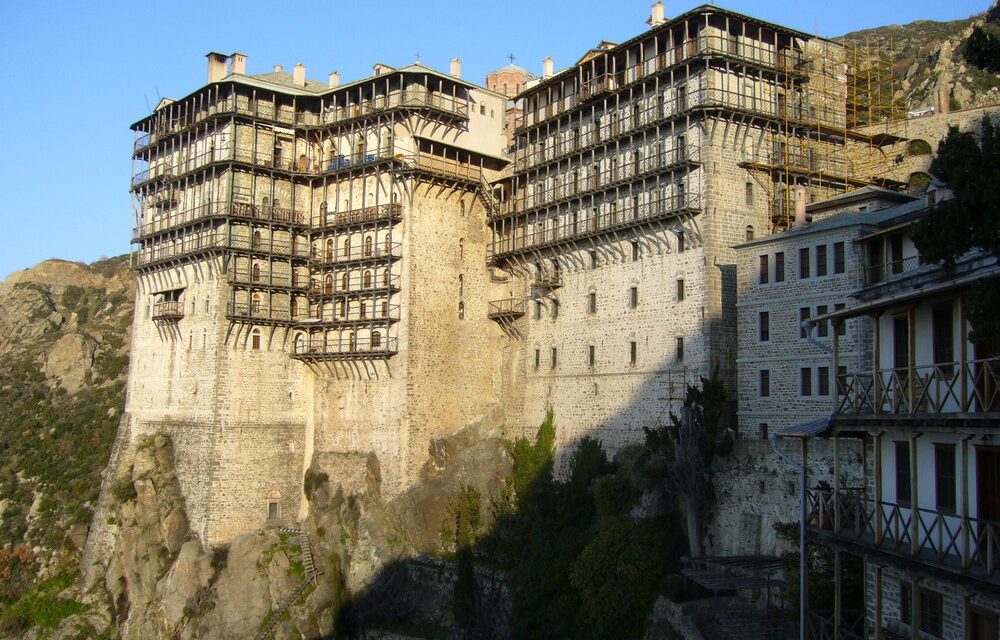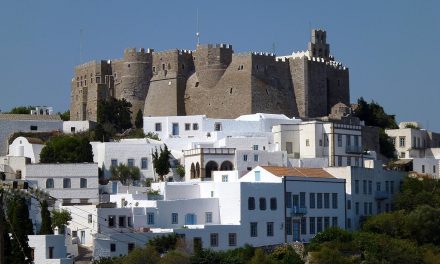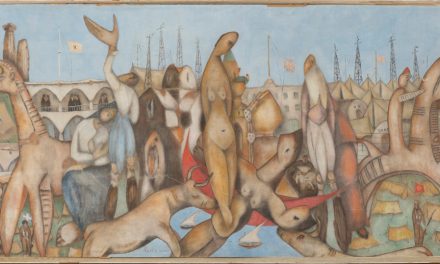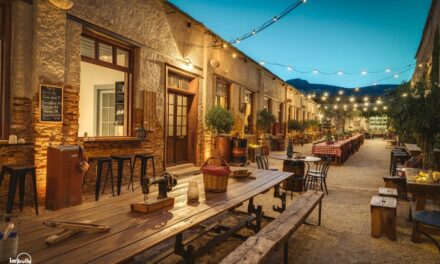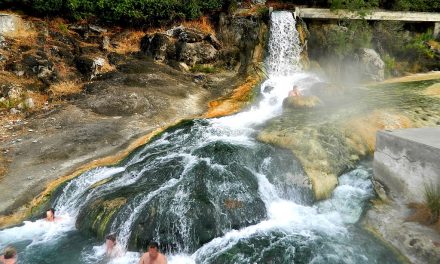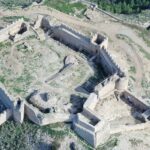Mount Athos, on the eponymous peninsula in Northern Greece, is the most important monastic community in the country and among the most important sites of pilgrimage for Eastern Christianity worldwide. Usually referred to as “Holy Mountain” by the Greeks, the site has been inscribed on UNESCO’s World Heritage List since 1988.
The region
The Athos peninsula is the easternmost -and most mountainous- of the three peninsulas of Chalkidiki, a region in Macedonia, Northern Greece, famous for its beautiful beaches and pristine waters. The peninsula is a geological continuation of the Rhodope Mountains of northern Greece and Bulgaria. Mount Athos has steep, densely forested slopes reaching up to 2,033 m (6,670 ft), with an extensive network of footpaths, many of which date back to the Byzantine period; it is home to a diverse flora and fauna, including many endemic plant species.
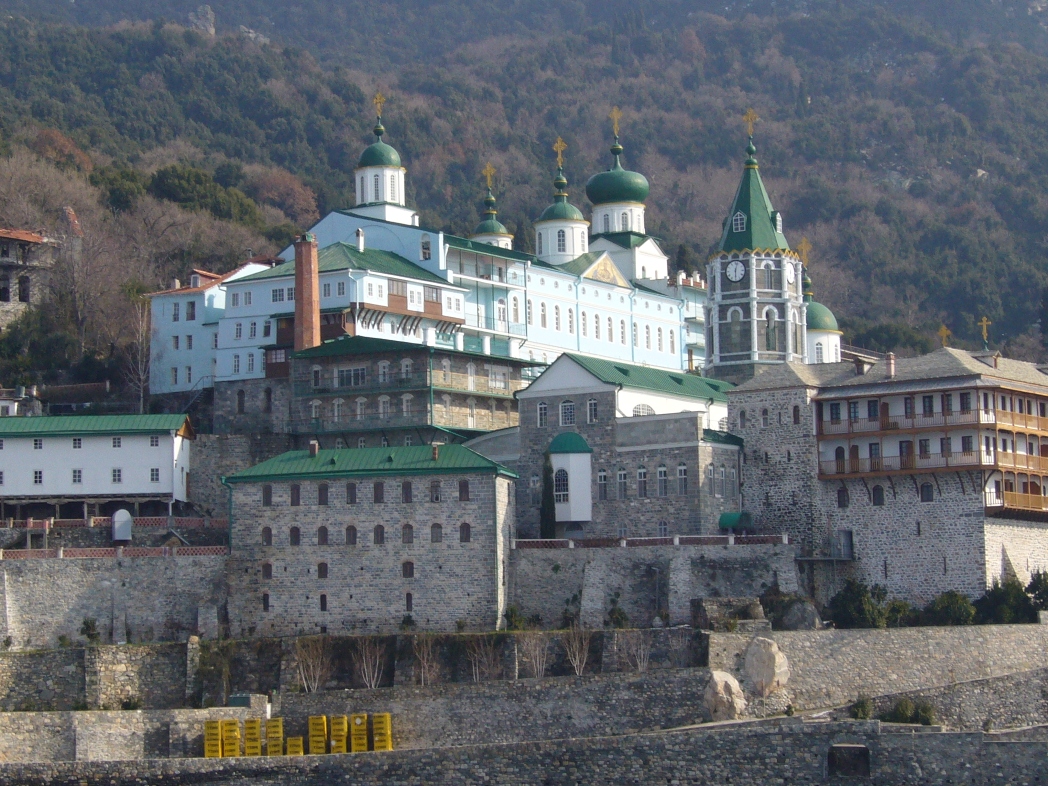
Status of autonomy
Mount Athos is the most important monastic community in Greece –the second most important being Meteora in Central Greece– and one of the largest Christian monastic communities in the world. It has been a centre of monastic life since at least as early as the eighth century AD, and is now home to twenty Eastern Orthodox monasteries inhabited by around 1,400 monks. Apart from the main monasteries, there are also twelve sketes (smaller monastic communities) under the authority of the larger monasteries, and some even smaller communities, called cells. The Monastery of Great Lavra is the oldest of all, founded in 963 AD by Athanasius the Athonite.
The mountain and most of the Athos peninsula are governed as an autonomous region in Greece. This autonomous status has been officially recognized since the Byzantine times, and is guaranteed by the Constitution of Greece: in Article 105, it is proclaimed that, “in accordance with its ancient privileged status”, Mount Athos is a self-governed part of the Greek State (remaining under its sovereignty).
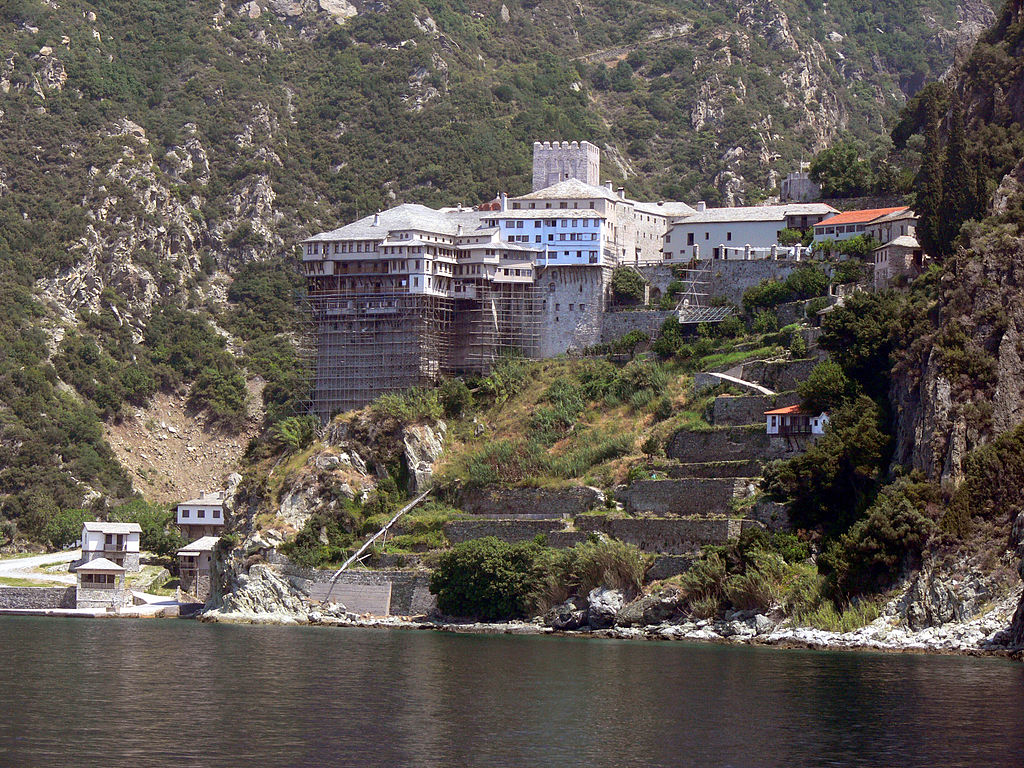
In the Constitution it is also established that Athons is “spiritually” under the direct jurisdiction of the Ecumenical Patriarchate (and is hence exempt from the authority of the Archbishop of Athens and All Greece), and that “all persons leading a monastic life thereon acquire Greek citizenship without further formalities, upon admission as novices or monks”.
In Greek orthodox tradition, the peninsula is the “Garden of Panagia (the Virgin Mary)” who, according to the legend, claimed it for herself for its unique beauty, and wished that no other woman ever steps on it. Women and children are indeed prohibited from entering the monastic enclave; in practice, this probably originated in an effort to help the (exclusively male) monks and anchorites residing Athos to distance themselves from all worldly thoughts and interests and adhere to the rule of celibacy.
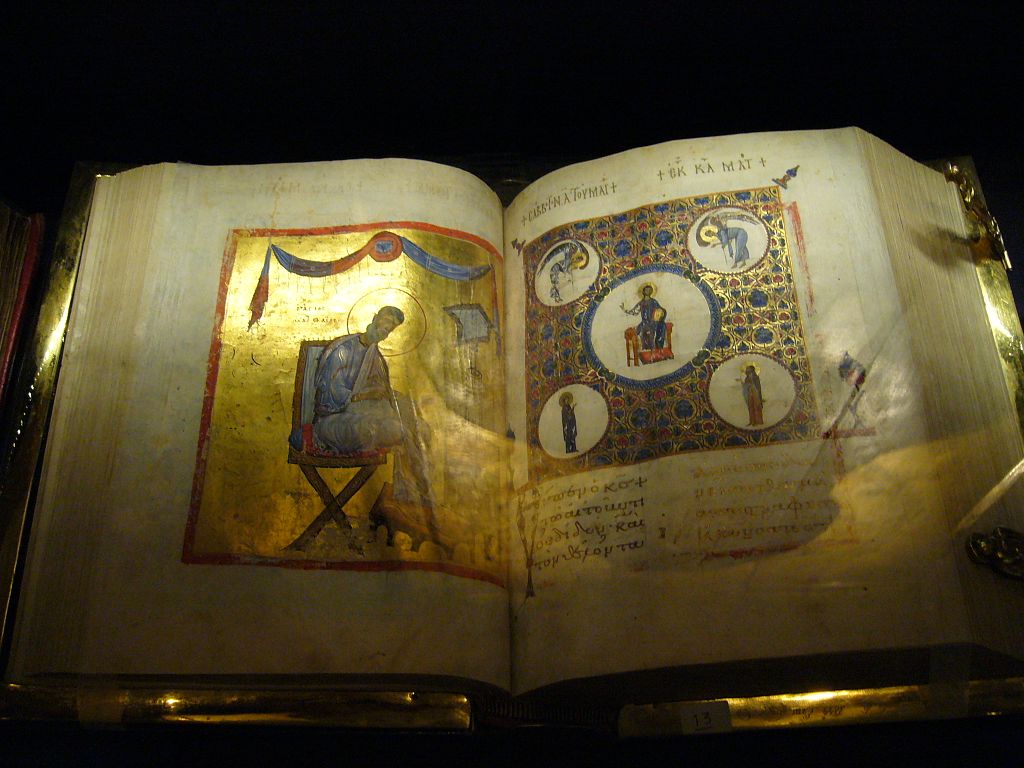
Cultural value
Besides its religious stature, the Holy Mountain is also a site of great artistic importance. As UNESCO points out, the “transformation of a mountain into a sacred place made Mount Athos a unique artistic creation combining the natural beauty of the site with the expanded forms of architectural creation”. Moreover, its monasteries hosts impressive works of Christian art ranging from Byzantine murals to portable icons, artifacts and illuminated manuscripts of great historical and aesthetic value. The religious art produced on Athos has had lasting influence throughout the Eastern Orthodox Church.
The monasteries of the Holy Mountain are typical examples of Orthodox monastic architecture of the medieval period, with fortified buildings encircling the katholikon (the equivalent of a conventual church). All the monasteries are well preserved through ongoing restoration projects, and the materials used for restoration are traditional and environment-friendly.
The restoration and conservation work, co-financed by the European Union, is being carried out by the Hellenic State, and there is ongoing cooperation between the monastic community and the responsible departments of the Ministry of Education and Religious Affairs, the Ministry of Culture and Sports, the General Secretariat of Culture and other ministries.
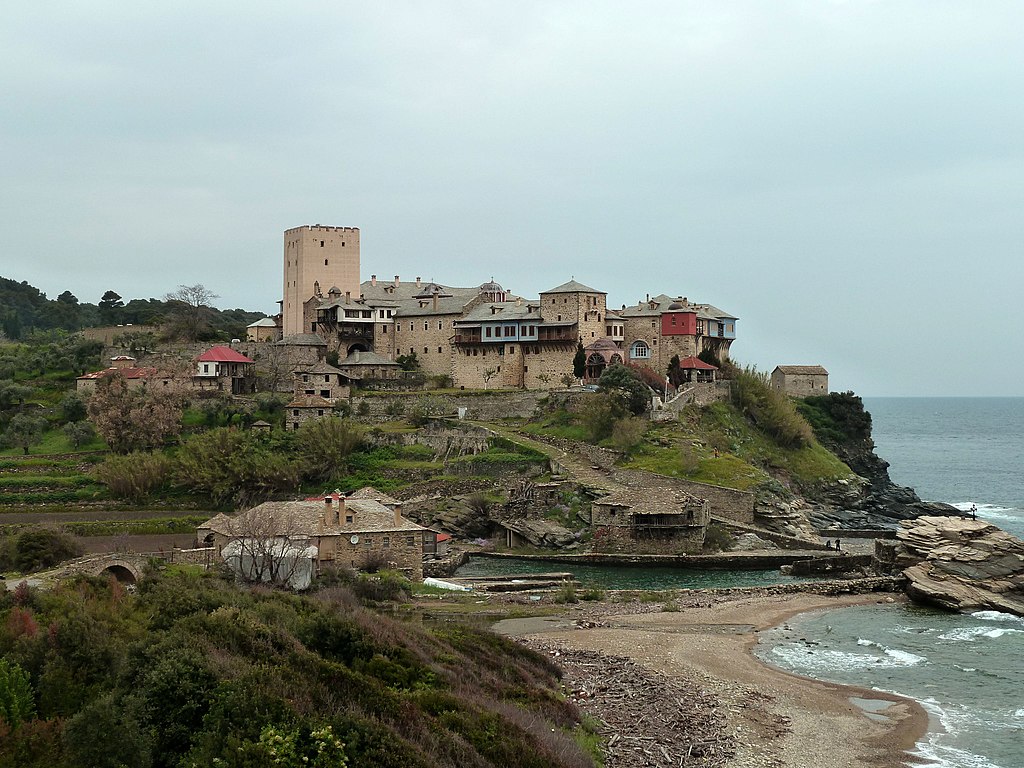
The life of the monks
Over the years, the monastic community of Athos developed great influence and the monasteries accumulated wealth thanks to important Greek and international benefactors, from Byzantine Emperors –such as Nikephoros II Phokas, John I Tzimiskes and the Palaiologos dynasty– to Russian czars and, later, even Ottoman sultans, such as Murad II and Selim I.
The monks’ everyday life consists of praying (either in common services or in private), common dining, working (according to the duties of each monk, often in rural occupations) and rest. During religious celebrations, long vigils are typically held. Their diet is simple and mostly consists of bread, olives, oil, wine, pulses and vegetables. Pilgrims and visitors are often accommodated in the guesthouses, and have to follow the same lifestyle for as long as they are lodged.
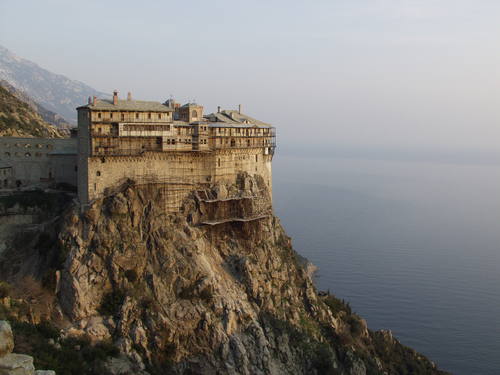
N.M. (Sources: UNESCO; Monastic community of Mount Athos (Wikipedia); Monte Athos – Stato Monastico Autonomo del Monte Athos (Punto Grecia); intro image: Simonopetra Monastery © UNESCO, by Christian Manhart
Read also via Greek News Agenda: Meteora, the hanging monasteries of Greece; The Monastery of Saint John the Theologian and the Cave of the Apocalypse on Patmos; The historic Sumela Monastery in Trabzon

